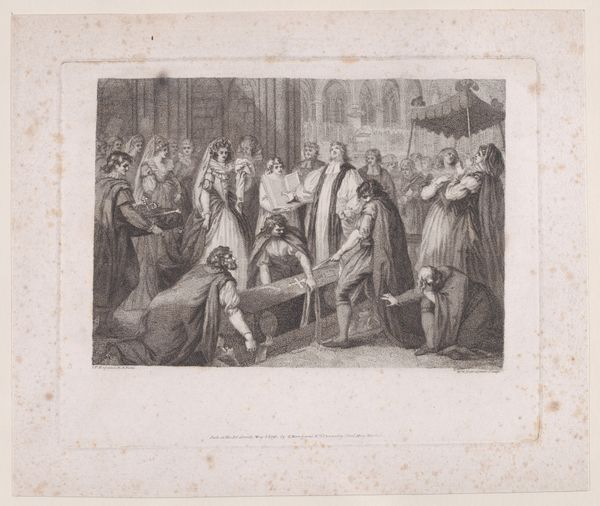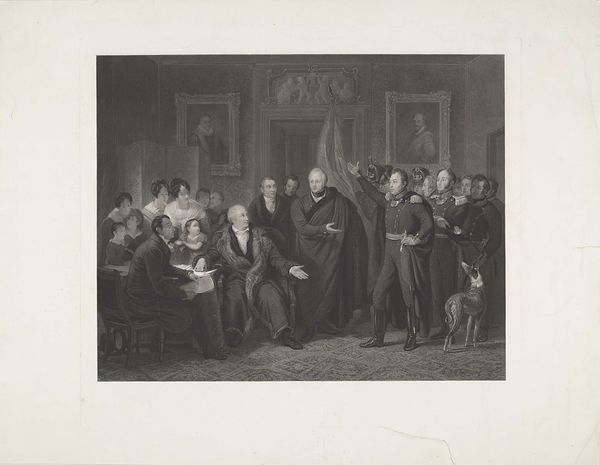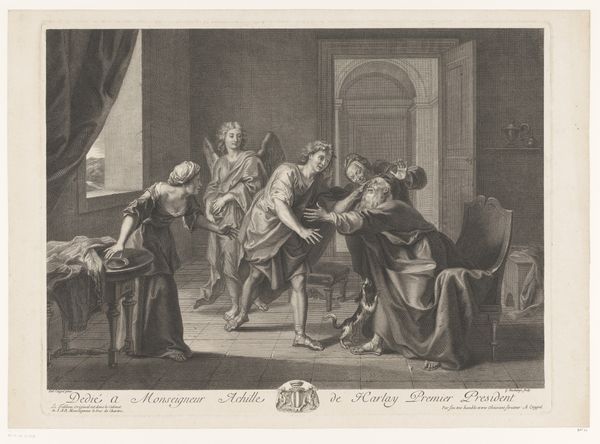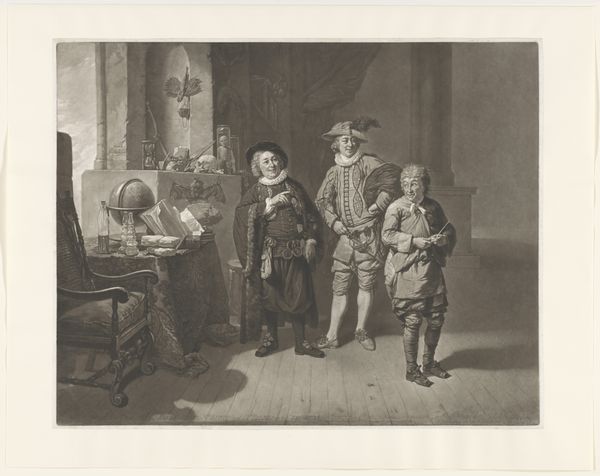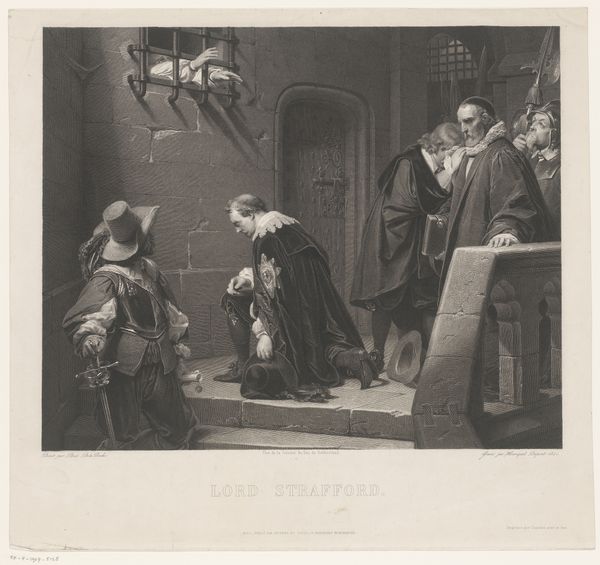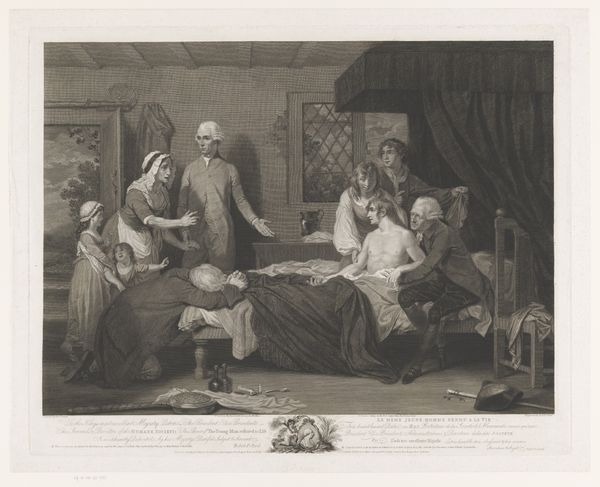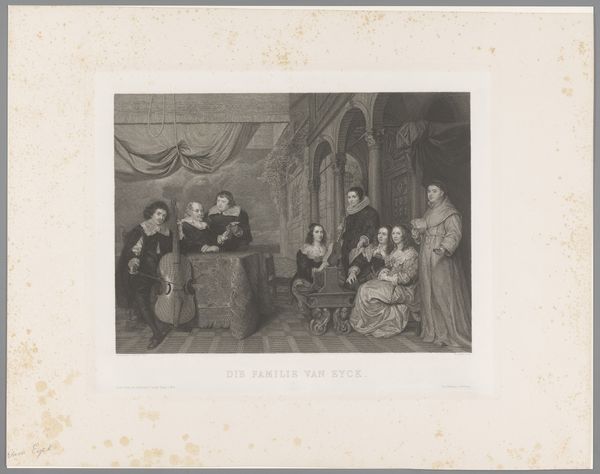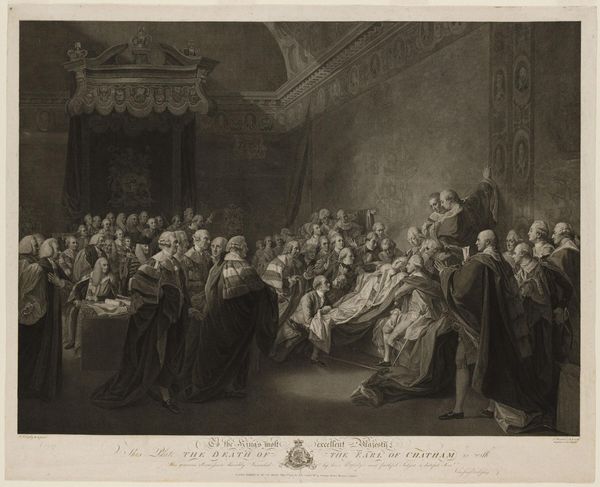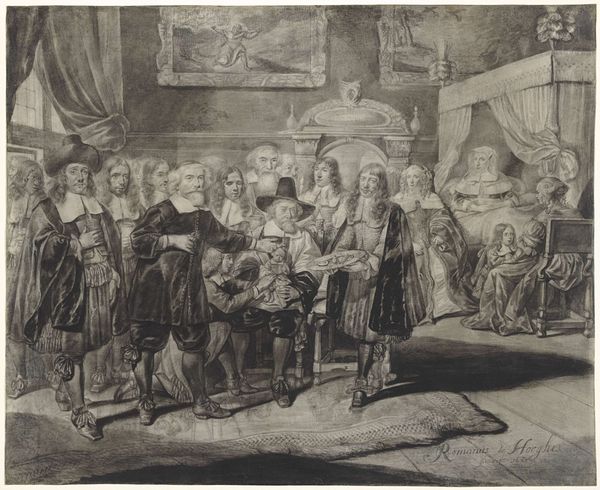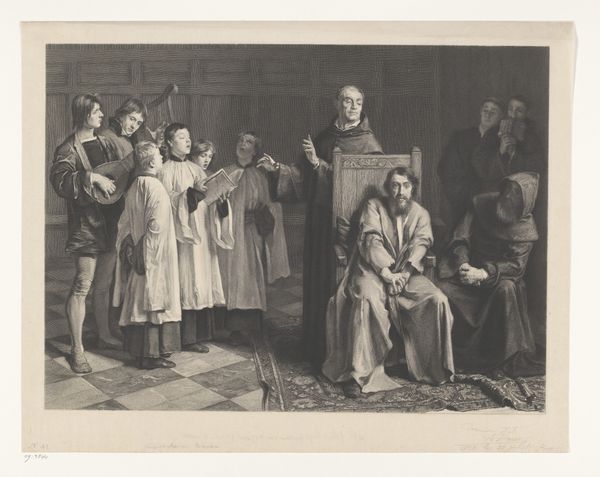
Dimensions: height 476 mm, width 588 mm
Copyright: Rijks Museum: Open Domain
Editor: This print from 1791, "Judas brengt de zilverlingen terug" by Robert Dunkarton, depicts a scene of high drama with strong contrasts. It’s so Baroque in its intensity. What socio-political factors might have influenced its creation and reception at the time? Curator: That's a great question. Think about the context of printmaking at the end of the 18th century. Engravings like these played a crucial role in disseminating imagery to a wider public. How do you think an image like this, with its strong moral message, functioned in the public sphere? Editor: Well, it's religious narrative art, so it might serve as a didactic tool, teaching viewers about morality and sin. It was likely commissioned to decorate churches or wealthy individuals' homes? Curator: It could be that. Consider also how the depiction of Judas relates to broader social anxieties around betrayal, guilt, and redemption. These themes resonate beyond just the religious sphere, speaking to anxieties about political loyalty, social upheaval, and individual accountability in a changing world. Notice how the council members look impassive. Do they hold power through law, wealth, social connection or faith? Editor: Interesting point! Their impassivity gives me the chills. And Judas, writhing and throwing down the coins—it's meant to shock the viewer, but perhaps also to prompt them to consider their own ethical choices in a corrupt system? Curator: Exactly. It asks the viewer, "Where do you stand in relation to power, betrayal, and moral responsibility?" Moreover, consider the economics of image-making in this era; were the engravings themselves creating new interpretations through the medium, such as influencing popular understandings of scripture? Editor: Wow, so this print isn’t just about a biblical story, it reflects deeper societal concerns and the mechanics of its production. I learned so much! Curator: Yes! It is through this interdisciplinary approach to art that we see that images can often show history!
Comments
No comments
Be the first to comment and join the conversation on the ultimate creative platform.

